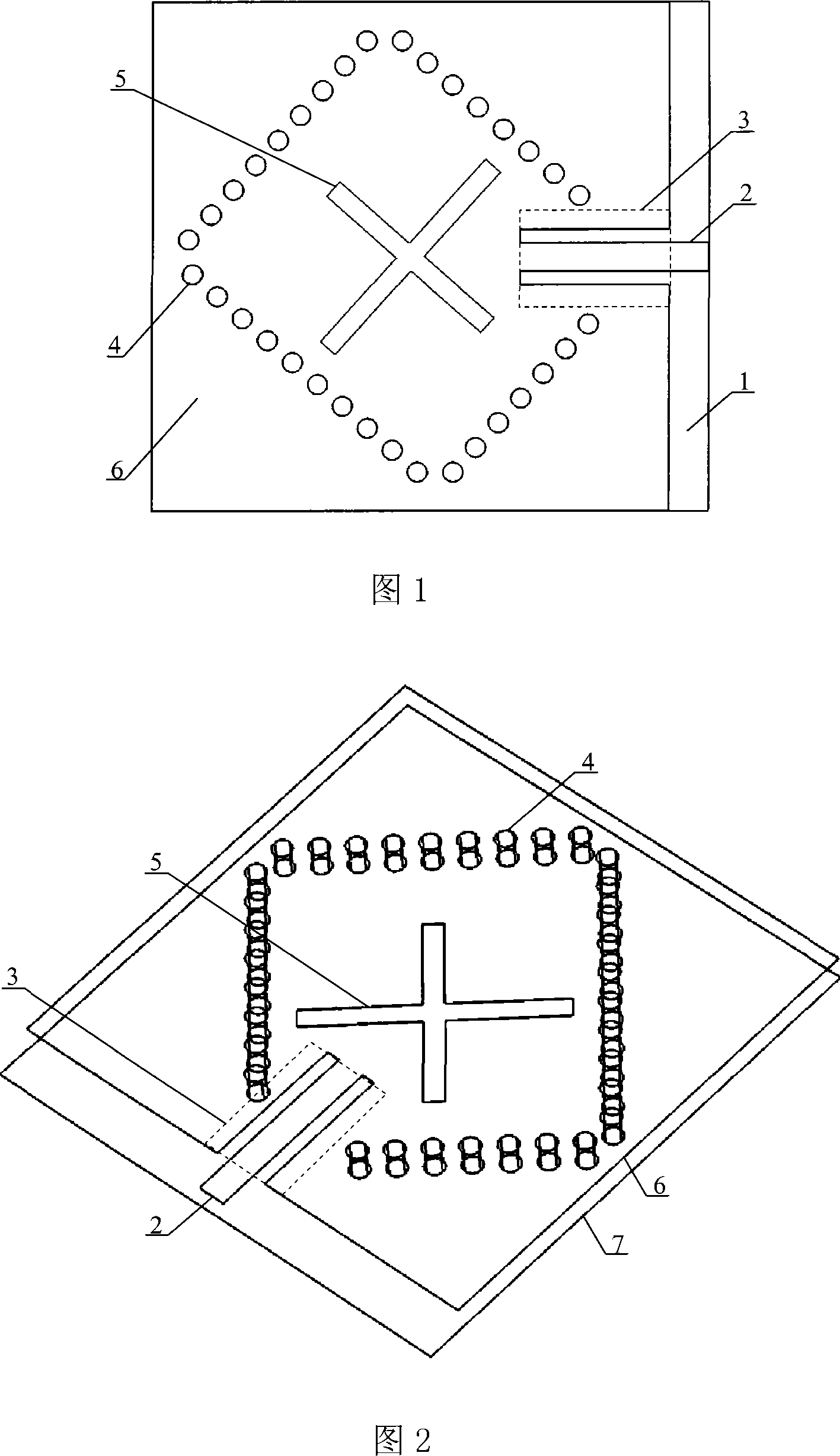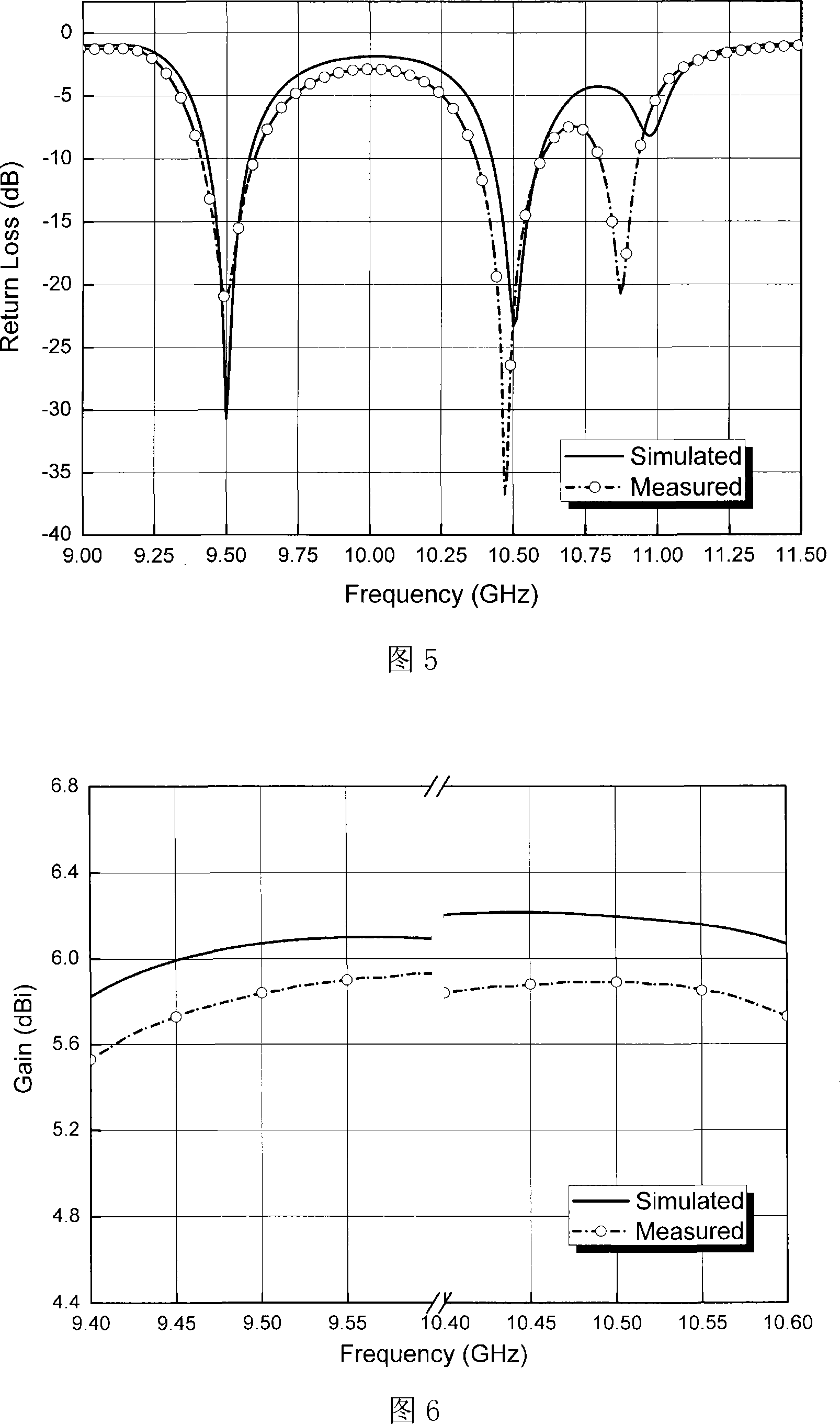Single feedback low profile back cavity dual-frequency bilinear polarization antenna
A polarized antenna and low-profile technology, applied in the microwave field, can solve the problems of large antenna volume and high manufacturing cost, and achieve the effects of good radiation characteristics, reduced manufacturing cost, and high gain
- Summary
- Abstract
- Description
- Claims
- Application Information
AI Technical Summary
Problems solved by technology
Method used
Image
Examples
Embodiment Construction
[0021] As shown in Figures 1 and 2, the single-feed low-profile cavity-backed dual-frequency dual-linearly polarized antenna includes a Rogers5880 dielectric substrate 1 with a thickness of 0.5 mm, and the two sides of the dielectric substrate 1 are coated with metal layers, which are respectively the upper metal layer 6 and the lower metal layer 7, wherein the lower metal layer 7 is used as a stratum. As shown in Figure 3, the upper metal layer 6 is etched with a microstrip line 2 for feeding and a coplanar waveguide transmission line 3 (included in the dotted line frame). The coplanar waveguide transmission line 3 is a common ground coplanar waveguide structure, and its middle metal strip The external extension is used as the microstrip line 2. The length and width of the microstrip line 2 are 4 mm and 1.45 mm respectively, and the two air gaps of the coplanar waveguide transmission line 3 both have a width of 0.7 mm and a length of 7.5 mm. A through hole with a diameter of...
PUM
 Login to View More
Login to View More Abstract
Description
Claims
Application Information
 Login to View More
Login to View More - R&D
- Intellectual Property
- Life Sciences
- Materials
- Tech Scout
- Unparalleled Data Quality
- Higher Quality Content
- 60% Fewer Hallucinations
Browse by: Latest US Patents, China's latest patents, Technical Efficacy Thesaurus, Application Domain, Technology Topic, Popular Technical Reports.
© 2025 PatSnap. All rights reserved.Legal|Privacy policy|Modern Slavery Act Transparency Statement|Sitemap|About US| Contact US: help@patsnap.com



